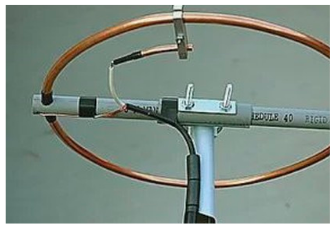At the bottom of webpages in the advertisement swamps I keep seeing this image of an antenna, accompanied by an offer that I won't be clicking on.
But the antenna itself looks quite intriguing. It's a circular, horizontal loop of copper with the ground braid of a coaxial cable connected at one point. The center conductor connects to what looks like tap that runs a short distance around the loop, connecting to it just shy of 90 degrees away from where the braid connects to it.
Assuming that this is a legitimate antenna design (and it might not be):
- What kind of loop antenna is it? What is it called?
- What is the relationship between the diameter of the loop and the wavelength at which it is used?
